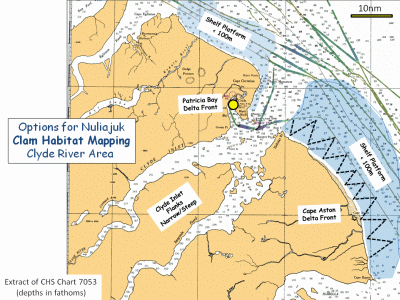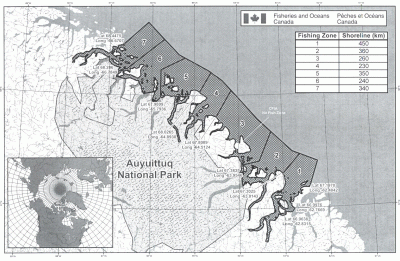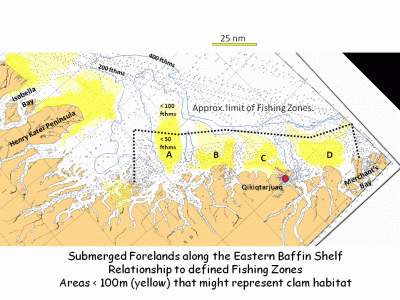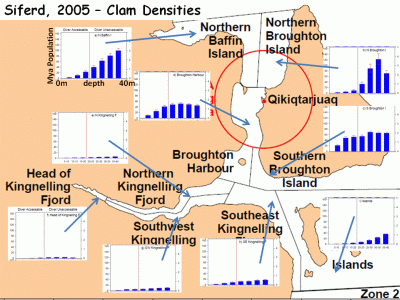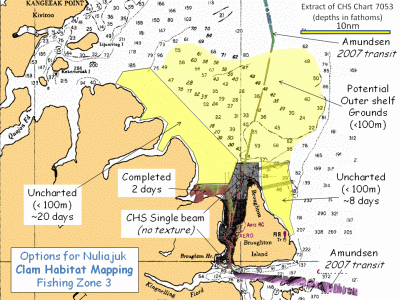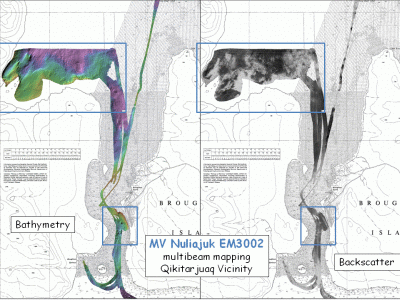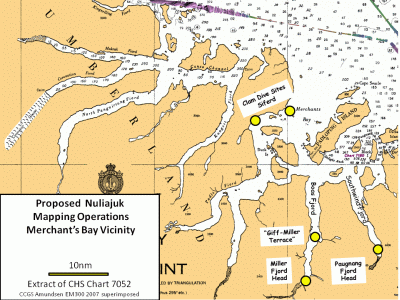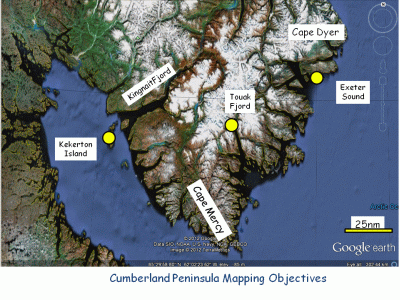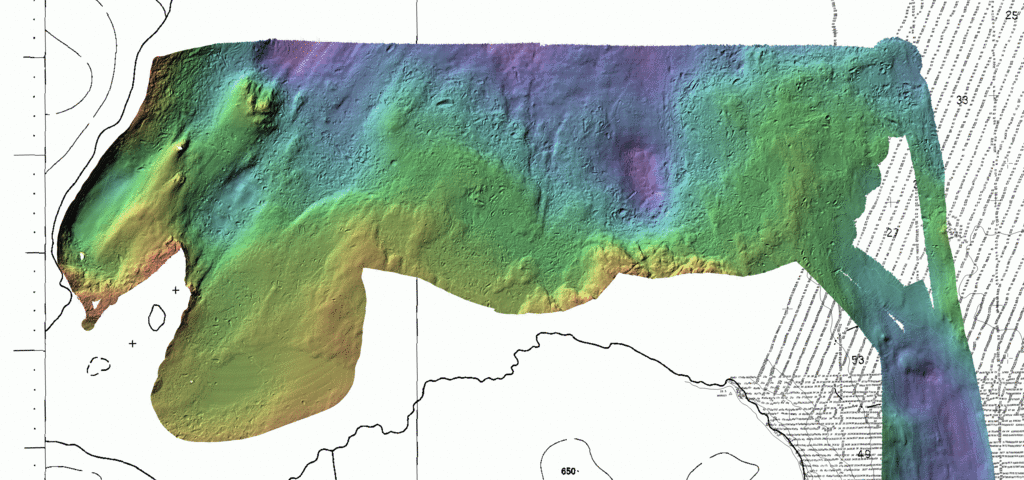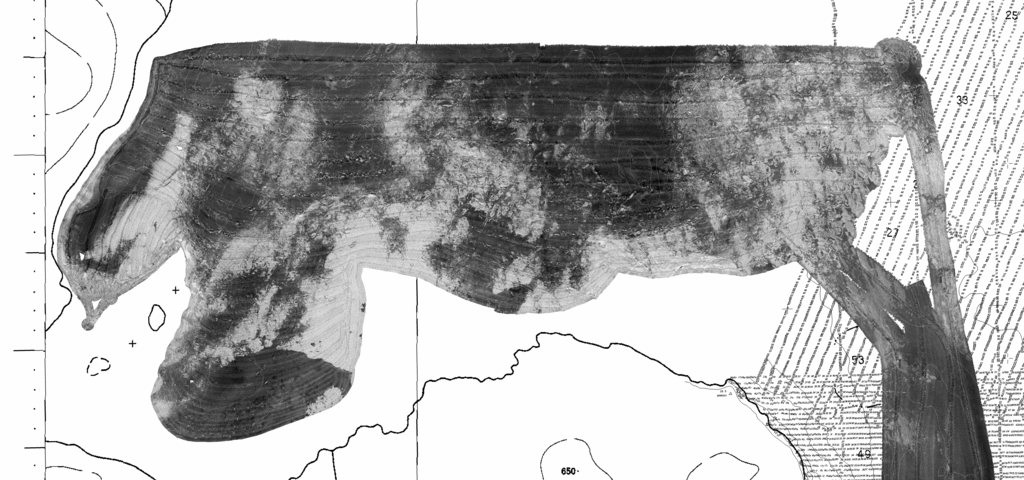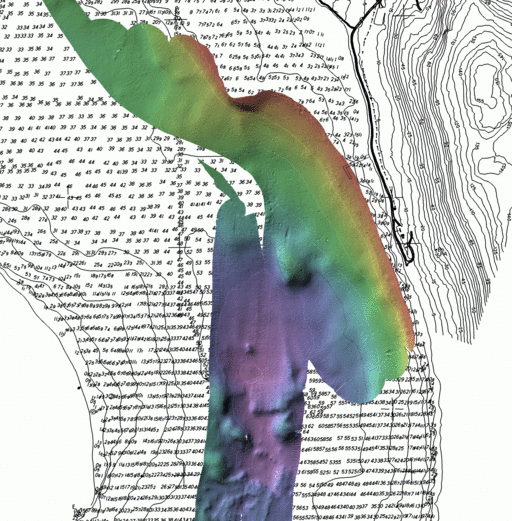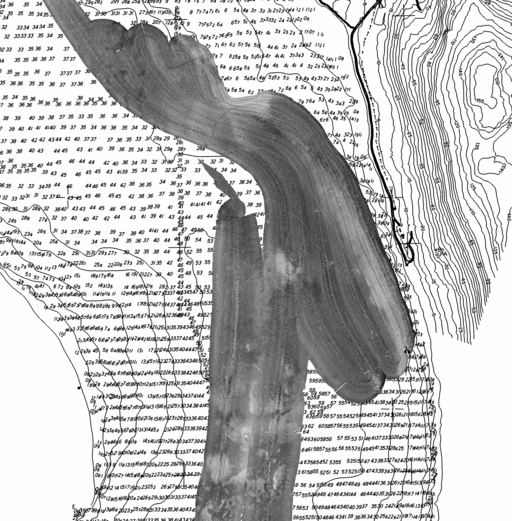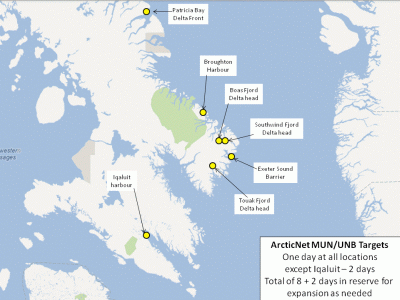
At this time, the ArcticNet funding is assumed to cover ~ 10 mapping days of Nuliajuk time off Baffin Island. The map to the left indicates the target locations. For each location, the prime aim is to look for submerged terraces in areas of rapid sedimentation. For most locations, a single 12 hour mapping day is considered to be sufficient. For the Iqaluit harbour area, 2 mapping days are implemented. This provided a total of 8 planned mapping days. Two extra days are held in reserve to expand any one of the target areas as desired by the staff on board.
Depending on whether inter-target transits are done in daylight only, or while steaming overnight (will the 5th crew member be on board for that?), the transit time between these will vary. A total of about 850nm need to be covered to get from Clyde to Iqaluit. This is ideally ~ 120 hours at 7 knots (~5 24 hour days). If only 12 hour days are utilized (anchoring overnight) then 10 transit days are needed.
So assuming that we start on 1st October (??) then the vessel should be ready to leave Iqaluit by the 20th. From there, it is another ~ 800nm (4-5 days straight?) steam to Goose Bay to complete the mapping work there.
